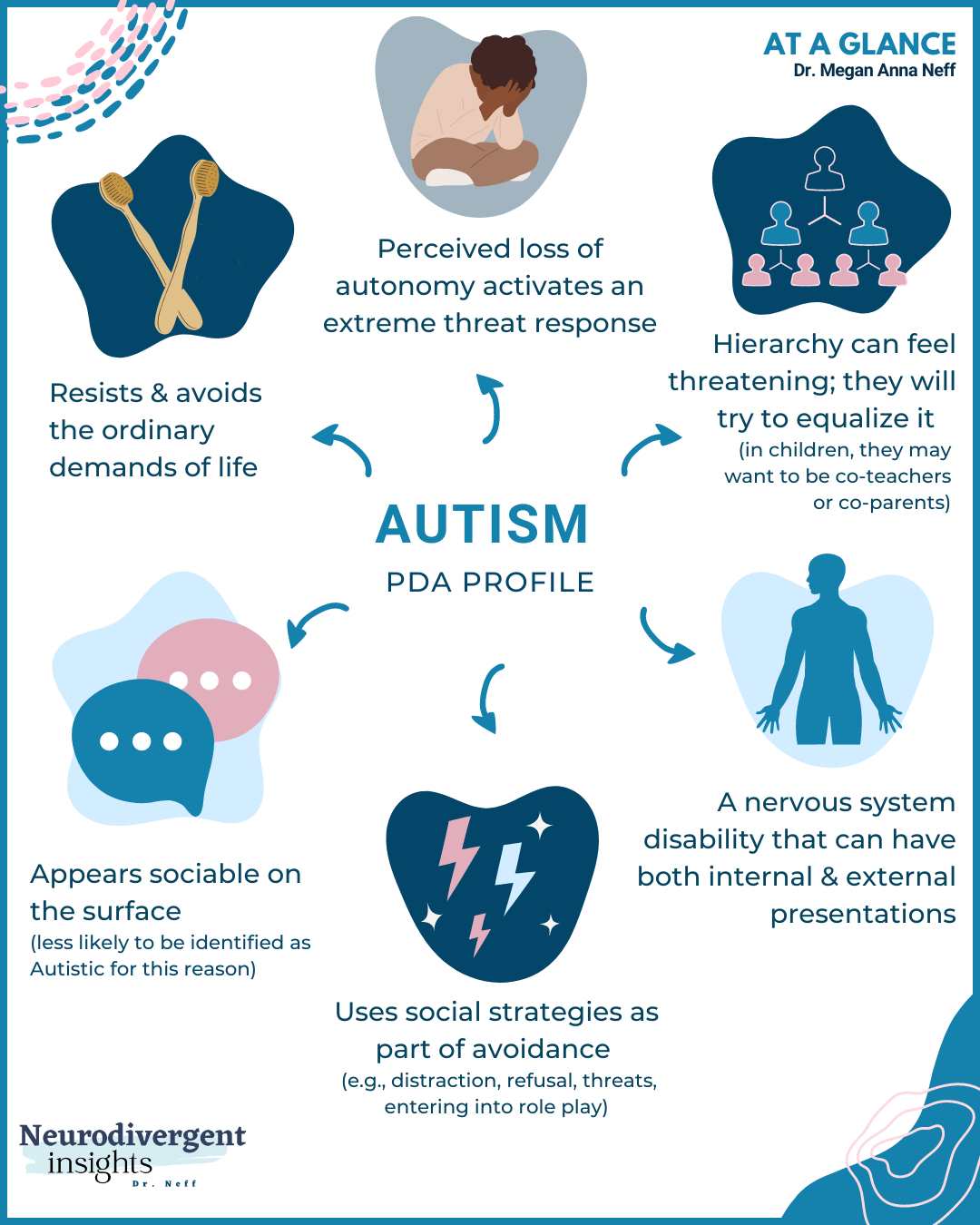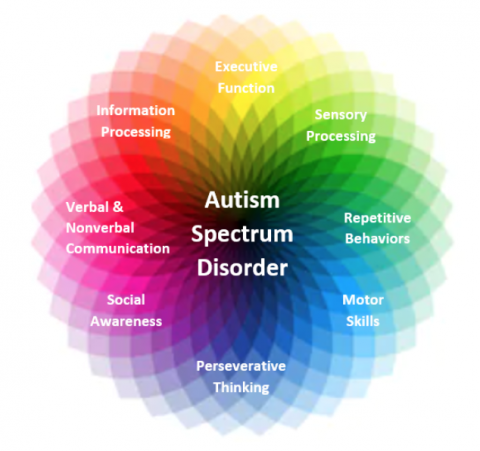Dealing With Usual Myths: What You Should Know About Autism Today
Dealing With Usual Myths: What You Should Know About Autism Today
Blog Article
Comprehending Autism: A Comprehensive Guide to Signs and indications
Autism Spectrum Condition (ASD) includes a broad variety of attributes that can substantially influence an individual's social communications and day-to-day functioning. Comprehending these subtleties not only help caregivers and instructors in offering appropriate assistance yet likewise cultivates a more inclusive atmosphere for individuals with ASD.
Overview of Autism Range Disorder
Defining Autism Spectrum Condition (ASD) involves acknowledging it as a complicated neurodevelopmental condition identified by a variety of difficulties in social communication, communication, and behavior patterns. The term "spectrum" reflects the large irregularity in signs and symptoms and their intensity, which can vary dramatically from one person to an additional. ASD commonly manifests in very early youth, although some people might not get a medical diagnosis up until later in life.
Aspects influencing the growth of ASD include hereditary proneness and environmental aspects, although the precise reasons continue to be under examination. Medical diagnosis typically counts on behavior analyses, as there are no definitive clinical examinations for ASD. Early treatment is crucial and can dramatically enhance end results, concentrating on boosting interaction skills, social communications, and adaptive behaviors.
Individuals with ASD may likewise display one-of-a-kind toughness, such as exceptional focus to detail or details areas of experience. Recognizing the multifaceted nature of ASD is important for fostering an inclusive setting that suits neurodiversity. Continued research study is essential for establishing effective treatments and support group, making it possible for people with ASD to prosper and fulfill their potential within society.
Typical Indicators of Autism
Acknowledging the typical signs of Autism Range Problem (ASD) is crucial for very early identification and intervention. These signs can vary extensively in intensity and presentation, but certain attributes are often observed in individuals with ASD.
Among one of the most common indicators is a significant trouble in developing and maintaining eye contact. People may additionally exhibit minimal rate of interest in social communications and reveal a choice for singular play. Repeated habits, such as hand-flapping, shaking, or spinning items, usually emerge early in childhood. Additionally, some kids may establish rigorous regimens and become troubled if these regimens are disrupted.
Sensory level of sensitivities are also usual; people might underreact or panic to sensory stimuli, such as lights, noises, or textures. autism. Language advancement can be irregular, with some children displaying delayed speech or making use of language in unusual ways, consisting of echolalia-- repeating expressions or sentences heard elsewhere
It is necessary to note that not every person with ASD will certainly display all these indications, and the level of these habits can differ substantially. Early acknowledgment allows for timely assistance and resources, enhancing the quality of life for those on the range.
Social Communication Obstacles
Social communication challenges are a hallmark of Autism Range Problem (ASD), influencing a person's ability to involve properly with others. These troubles can materialize in different methods, including difficulties in initiating and preserving conversations, understanding social hints, and responding appropriately in social interactions.
Individuals with ASD might battle with nonverbal communication, such as eye get in touch with, facial expressions, and body language. This can cause misconceptions, as their communicative intent might not be properly translated by others. Furthermore, they may find it difficult to understand the nuances of tone and context, which are essential for efficient interaction.
In group setups, people with ASD might really feel overwhelmed and may not know how to join in conversations (autism). They could also show atypical conversational patterns, such as monologuing about particular interests without identifying social reciprocity
Moreover, these difficulties can lead to social seclusion or problems in creating connections, as peers may misinterpret their actions or interaction design. Recognizing these social communication difficulties is important for fostering supportive environments that advertise social skills development and enhance the quality of communications for people on the autism spectrum.
Sensory Level Of Sensitivities and Reactions
Numerous people with Autism Spectrum Problem (ASD) experience increased sensory sensitivities that can substantially impact their daily lives. These sensitivities might manifest as over-responsiveness or under-responsiveness to sensory stimuli, including sounds, lights, structures, preferences, and smells. For instance, a person with ASD might locate everyday sounds, such as a hoover or crowded atmospheres, overwhelmingly upsetting, bring about anxiety or meltdowns. On the other hand, some may exhibit an indifference to pain or severe temperature levels, which can pose safety problems.
Sensory processing differences in individuals with ASD can likewise influence their capacity to participate in social interactions and regular tasks. For instance, a kid who is delicate to touch might stand up to physical affection or Homepage avoid particular clothes materials. A choice for particular textures or tastes can limit dietary alternatives and produce obstacles during nourishments.
Understanding these sensory level of sensitivities is essential for recognizing the distinct experiences of people with ASD. Awareness of their sensory accounts can foster far better interaction and support approaches, producing an atmosphere that accommodates their demands and boosts their quality of life. Eventually, acknowledging sensory level of sensitivities is an important element of understanding the broader spectrum of autism.

Supporting Individuals With Autism
Effective assistance for people with Autism Range Disorder (ASD) is essential for improving their general wellness and cultivating freedom. Assistance approaches need to be customized to fulfill the distinct needs of each individual, considering their toughness and obstacles.

Social skills training can likewise play a critical function. autism. Involving individuals in group tasks or role-playing circumstances can boost their ability to navigate social communications. In addition, it is important to educate relative, caretakers, and peers about ASD to promote a encouraging and comprehensive read the full info here community
Conclusion
To conclude, a detailed understanding of Autism Spectrum Problem is crucial for identifying its indications and symptoms. Early recognition of usual characteristics, such as social communication obstacles and sensory sensitivities, allows instructors and caregivers to execute reliable treatments. By cultivating boosted interaction and social skills, individuals with autism can browse their settings a lot more successfully. Eventually, raised understanding and assistance can dramatically improve the top quality of life for those influenced by ASD.
Autism Range Condition (ASD) incorporates a vast array of characteristics that can substantially affect a person's social interactions and day-to-day functioning.Individuals with ASD might battle with nonverbal interaction, such as eye contact, facial expressions, and body language.Several people with Autism Spectrum Problem (ASD) experience heightened sensory sensitivities that can significantly affect their everyday lives.Sensory handling differences in people with ASD can additionally influence their capacity to engage in he said social communications and routine activities.Understanding these sensory sensitivities is vital for recognizing the distinct experiences of people with ASD.
Report this page